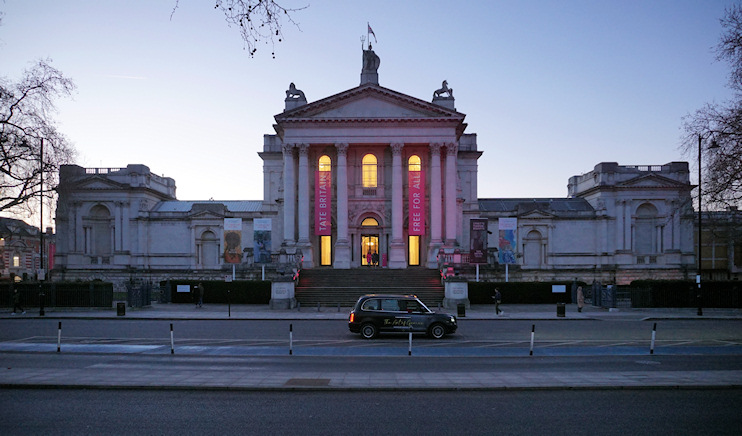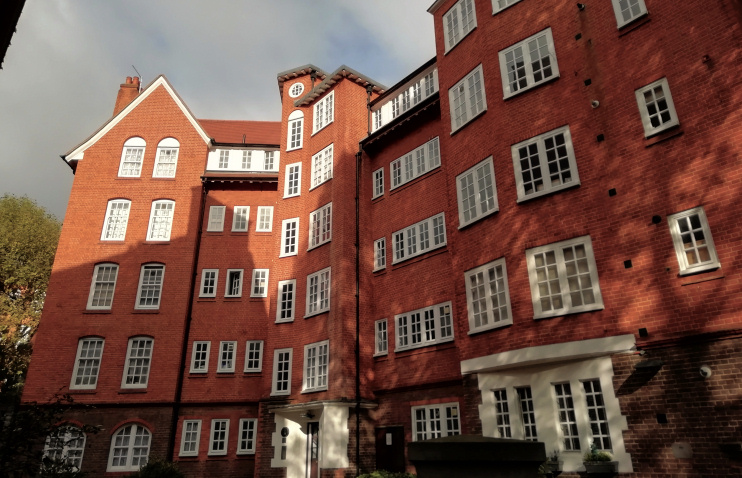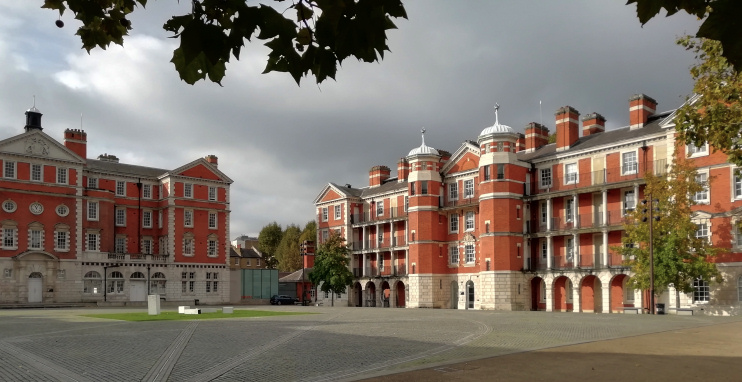Millbank
Millbank, Westminster
A Thames-side street in south Westminster, home to several significant institutions, with a residential quarter in its hinterland

This was land belonging to Westminster Abbey when it was first recorded in 1546. The name referred to the presence of watermills on the embanked riverside. The last of these mills, which stood at the very northern end of Millbank, was pulled down early in the 18th century.
Millbank Penitentiary opened in 1816, built in the shape of a six-pointed star and surrounded by an octagonal wall. This was the largest prison in the country and became infamous for its harsh regime, although its founding principles were relatively enlightened by the standards of the time.
The riverside wall and the road now called Millbank (formerly Grosvenor Road) were created in the mid-19th century as part of the Thames Embankment project.
The penitentiary was demolished in 1892 and the Royal Army Medical College and the Tate Gallery were erected on its site. Behind these, the London County Council laid out the arts-and-crafts influenced Millbank estate at the turn of the 20th century, primarily to accommodate tenants who had been displaced by the redevelopment of Clare Market in Holborn. Shown in the photo below, it remains one of the capital’s most aesthetically pleasing municipal housing estates.

The Tate Gallery’s buildings were designed by Sidney JR Smith, the architect chosen by sugar magnate Sir Henry Tate, who had donated the paintings that formed the nucleus of the new collection and much of the necessary funding for the gallery’s construction. The buildings have been progressively extended, notably in 1987 with the opening of the Clore gallery, which houses works by JMW Turner. With the transfer of the post-1900 collection to Tate Modern on Bankside, the original buildings were rebranded Tate Britain. Since 2010 a multi-stage refurbishment dubbed the Millbank Project has transformed much of the site.
In 1997 the Labour Party relocated its headquarters from working-class Walworth Road to the 32-storey Millbank Tower, which stands just north of Tate Britain. To some, the move symbolised the ascendancy of Labour’s modernisers, who were labelled the ‘Millbank tendency’. Labour moved out in 2002 to save money.
From 2007 to 2014 the Conservative Party based its campaign headquarters at 30 Millbank, in the same complex as Millbank Tower. Protesting students laid siege to the building in November 2010.
Security service MI5 is based at the forbidding-looking Thames House, which originally served as the headquarters of ICI. Shown in the photo below, the former army medical college became home in 2005 to Chelsea College of Arts, now part of University of the Arts London.

One of Turner’s first experiments in oil, Moonlight, a Study at Millbank (c.1797), hangs in Tate Britain.
